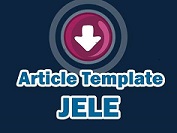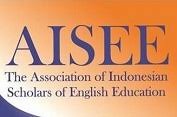Undergraduate Students' Perceptions of Using AI: Is Quillbot Helping Students' Writing?
DOI:
https://doi.org/10.36706/jele.v11i1.30Keywords:
artificial intelligence, perception, quillbot, undergraduate, writingAbstract
QuillBot is an application that uses artificial intelligence algorithms to help users produce coherent writing. It helps undergraduate students find errors in writing, such as punctuation, grammar, and others, because QuillBot offers features that facilitate students' writing effectively, such as language enhancement, grammar correction, and paraphrasing. The objective of this study is to investigate the ways in which QuillBot enhances confidence in writing and facilitates the assistance of writing abilities through a descriptive qualitative study. Data were collected through questionnaires and semi-structured interviews that were analyzed by using thematic analysis. The participants of this research were 31 students whose writing level is already at the advanced writing level. The results showed that undergraduate students responded positively, such as increasing their confidence when writing so they did not hesitate to write because QuillBot provides suggestions for improving writing identifying and correcting less clear sentences. Talking about its technical support, QuillBot is also easy to use without a long process and does not waste time. QuillBot offers valuable and helpful features for students because its features make it easy for them to improve their writing.
References
A. Lambert, V., & E. Lambert, C. (2013). Qualitative descriptive research: An acceptable design. Pacific Rim International Journal of Nursing Research, 16(4), 255–256.
Alharbi, W. (2023). AI in the foreign language classroom: A Pedagogical overview of automated writing assistance tools. Education Research International, 2023, 1–15. https://doi.org/10.1155/2023/4253331
Amanda .A, Sukma, E.M., Lubis, N., & Dewi, U. (2023). QuillBot as an AI-powered English writing assistant: An alternative for students to write English. Jurnal Pendidikan Dan Sastra Inggris, 3(2), 188–199. https://doi.org/10.55606/jupensi.v3i2.2026
Arif, T. Z. Z. Al, & Handayani, R. (2021). Factors influencing the use of ICT for English language learning of Indonesian EFL university students. Elsya : Journal of English Language Studies, 4(1), 24–33. https://doi.org/10.31849/elsya.v4i1.6882
Arikunto, S. (2006). Prosedur Penelitian Suatu Pendekatan Praktik (VI). PT. Asdi Mahasatya.
Ariyanti, A., & Anam, S. (2021). Technology-enhanced paraphrasing tool to improve EFL Students’ writing achievement and enjoyment. Journal of English Language Teaching and Linguistics, 6(3), 715. https://doi.org/10.21462/jeltl.v6i3.698
Baron, G., Lorenzo, C., & Benoît, D. (2023). Students’ perception on the use of Quillbot to improve Grammar. Lingeduca: Journal of Language and Education Studies. https://doi.org/10.55849/lingeduca.v2i3.547
Baytak, A., & Tarman, B. (2011). Experiencing technology integration in education: Children"s perceptions. International Electronic Journal of Elementary Education, 3(2)
Berg, B. L. (2007). Qualitative Research Methods for the Social Sciences. Pearson. Pearson.
Braun, V., & Clarke, V. (2006). Qualitative research in Psychology using thematic analysis in Psychology. Qualitative Research in Psychology, 3(2), 77–101.
Bulqiyah, S., Mahbub, M. A., & Nugraheni, D. A. (2021). Investigating writing difficulties in essay writing: Tertiary students’ perspectives. English Language Teaching Educational Journal, 4(1), 61. https://doi.org/10.12928/eltej.v4i1.2371
Chui, H. C. (2022). The QuillBot Grammar Checker: Friend or foe of ESL Student writers? Journal of Creative Practices in Language Learning and Teaching (CPLT), 10(1), 2022.
Clarke, V., & Braun, V. (2017). Thematic analysis. The Journal of Positive Psychology, 12(3), 297–298. https://doi.org/10.1080/17439760.2016.1262613
Creswell, J. W., & Creswell, J. D. (2018). Mixed Methods Procedures.
Dale, R. (2020). Natural language generation: The commercial state of the art in 2020. Natural Language Engineering, 26(4), 481–487. https://doi.org/10.1017/S135132492000025X
Fithriani, R. (2019). ZPD and the benefits of written feedback in L2 writing: Focusing on students’ perceptions. The Reading Matrix: An International Online Journal, 19(1).
Fitria, T. N. (2021a). Grammarly as AI-powered English Writing Assistant: Students’ alternative for writing English. Metathesis: Journal of English Language, Literature, and Teaching, 5(1), 65. https://doi.org/10.31002/metathesis.v5i1.3519
Fitria, T. N. (2021b). QuillBot as an online tool: Students’ alternative in paraphrasing and rewriting of English writing. Englisia: Journal of Language, Education, and Humanities, 9(1), 183. https://doi.org/10.22373/ej.v9i1.10233
Fitria, T. N. (2022). Avoiding plagiarism of students’ scientific writing by using the Quillbot paraphraser. Elsya : Journal of English Language Studies 4(3), 252–262. https://doi.org/10.31849/elsya.v4i2.9917
Fitriani, N., Sabarniati, S., & Safuni, N. (2021). Is English academic writing as simple as using translation tool? error analysis on students’ abstract. The Journal of English Literacy Education: The Teaching and Learning of English as a Foreign Language, 8(1), 55–67. https://doi.org/10.36706/jele.v8i1.13607
Guest, G., MacQueen, K., & Namey, E. (2014). Applied thematic analysis. In Applied Thematic Analysis. SAGE Publications, Inc. https://doi.org/10.4135/9781483384436
Huang, F., Qi, J., & Xie, A. (2022). Sustaining Teaching with technology after the quarantine: Evidence from Chinese EFL teachers’ technological, pedagogical and content knowledge. Sustainability (Switzerland), 14(14). https://doi.org/10.3390/su14148774
Hz, B. I. R., Laiya, R. E., Sarumaha, M. S., & Supiyandi. (2023). Navigating English writing proficiency tests in the era of artificial intelligence. journal of English Education and Teaching, 7(3), 480–498. https://doi.org/10.33369/jeet.7.3.480-498
Jaladara, A. R., Jafar, M. B., & Salija, K. (2023). QuillBot web-application: Utilizing online technology on academic writing at an Indonesian Islamic Higher Education. Celebes Journal of Language Studies, 3(2), 275-284. https://doi.org/10.51629/cjls.v3i2.152
Jashari, L. T., & Fojkar, M. D. (2019). Teachers’ perceptions of developing writing skills in the EFL classroom. ELOPE: English Language Overseas Perspectives and Enquiries, 16(2), 77–90. https://doi.org/10.4312/elope.16.2.77-90
Kinga, S., & Gupta, G. S. (2021). Platforms As Foundation of Sharing Economy. Delhi Business Review, 22(1), 1–13. https://doi.org/10.51768/dbr.v22i1.221202101
Kurniati, E. Y., & Fithriani, R. (2022). Post-graduate students’ perceptions of QuillBot Utilization in English Academic Writing class. Journal of English Language Teaching and Linguistics, 7(3), 437. https://doi.org/10.21462/jeltl.v7i3.852
Kusuma, I. P. I. (2020). Mengajar bahasa Inggris dengan teknologi: Teori dasar dan ide pengajaran. Deepublish.
Maher, F., & Al-Khasawneh, S. (2010). Writing for Academic Purposes: Problems faced by Arab postgraduate students of the College Of Business, UUM. ESP World, Issue, 2(28).
Mulyadi, M., Nurani, S., & Frijuniarsi, N. (2020). The assessment of students’ English writing skill at SMA Yaspen Tugu Ibu Depok. Scope : Journal of English Language Teaching, 5(1), 42. https://doi.org/10.30998/scope.v5i1.7222
Nabhan, R. J. (2017). Integration of inquiry-based learning and ongoing assessment to develop English essay writing in upper intermediate level. Open Journal of Modern Linguistics, 7(2), 90-107. https://doi.org/10.4236/ojml.2017.72008
Nova, M. (2018). Utilizing Grammarly in evaluating academic writing: A Narrative research on EFL students’ experience. Premise: Journal of English Education, 7(1), 80-96. https://doi.org/10.24127/pj.v7i1.1332
Nur Azizah, N., & Erlangga, D. (2023). The effectiveness of QuillBot in developing students’ literation. Pustakailmu.Id, 3(1), 1–12.
Nurhayati, D. A. W. (2022). The relevance of adopting proofreading tools to maintain academic writing integrity and coherence text. Indonesian Journal of EFL and Linguistics, 7(2), 373-396. https://doi.org/10.21462/ijefl.v7i2.547
Nurmayanti, N., & Suryadi, S. (2023). The effectiveness of using QuillBot in improving writing for students of English Education Study Program. Jurnal Teknologi Pendidikan : Jurnal Penelitian Dan Pengembangan Pembelajaran, 8(1), 32. https://doi.org/10.33394/jtp.v8i1.6392
Okumuş Ceylan, N. (2019). Student perceptions of difficulties in second language writing. Dil ve Dilbilimi Çalışmaları Dergisi, 15(1), 151–157. https://doi.org/10.17263/jlls.547683
Perkins, M. (2023). Academic integrity considerations of AI Large Language Models in the post-pandemic era: ChatGPT and beyond. Journal of University Teaching and Learning Practice, 20(2). https://doi.org/10.53761/1.20.02.07
Popenici, S. A. D., & Kerr, S. (2017). Exploring the impact of artificial intelligence on teaching and learning in higher education. Research and Practice in Technology Enhanced Learning, 12(1). https://doi.org/10.1186/s41039-017-0062-8
Shabbir, J., & Anwer, T. (2018). Artificial Intelligence and its Role in Near Future. http://arxiv.org/abs/1804.01396
Sujarweni, V. W. (2015). Metodologi Penelitian Bisnis dan Ekonomi V.
Syahnaz, M., & Fithriani, R. (2023). Utilizing artificial intelligence-based paraphrasing tool in EFL writing class: A focus on Indonesian University students’ perceptions. Scope : Journal of English Language Teaching, 7(2), 210. https://doi.org/10.30998/scope.v7i2.14882
Vannatta, R. A., & Fordham, N. (2004). Teacher dispositions as predictors of classroom technology use. Journal of Research on Technology in Education, 36(3), 253–271. https://doi.org/10.1080/15391523.2004.10782415
Wigham, C. R. (2020). Review of The handbook of technology and second language teaching and learning. Alsic, Vol. 23, n° 1. https://doi.org/10.4000/alsic.4592
Williams, K., & Davis, M. (2017). APA style American Psychological Association. In Referencing & Understanding Plagiarism. https://doi.org/10.1057/978-1-137-53072-1_16
Xuyen, N. T. (2023). Using the online paraphrasing tool QuillBot to assist students in paraphrasing the source information: English-majored students’ perceptions. Proceedings of the 5th Conference on Language Teaching and Learning, 2022, 21–27. https://doi.org/10.21467/proceedings.150.3
Zhang, Z. (2020). Engaging with automated writing evaluation (AWE) feedback on L2 writing: Student perceptions and revisions. Assessing Writing, 43, 100439. https://doi.org/10.1016/j.asw.2019.100439
Downloads
Published
Issue
Section
License
Copyright (c) 2024 The Journal of English Literacy Education: The Teaching and Learning of English as A Foreign Language

This work is licensed under a Creative Commons Attribution-ShareAlike 4.0 International License.













